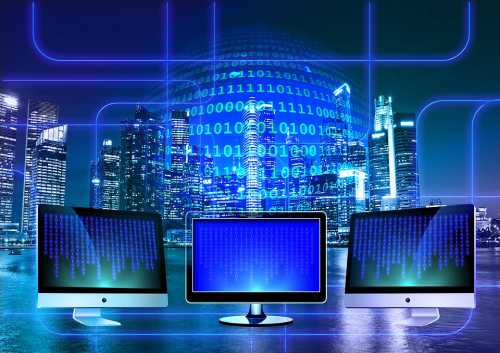Do you remember the innovations of the Windows Server 2019 that we explained in the previous post? We are sure!
In this posts, we will learn more about the Edge Computing. Do you know what it? Well, go for it!
In recent years, industrial companies have begun to drive further improvements in their performance and productivity through the use of technological innovations. Although recently developed Cloud technology is one of the main reasons for this industrial transformation, Edge Computing is fast becoming a key part of the Internet of Things (IoT) equation in the acceleration of the digital revolution.

What is Edge Computing?
In the context of the IoT, "Edge" refers to the computer infrastructure that exists near data sources, for example, industrial machines such as wind turbines, magnetic resonance (MR) scanners, underwater explosion prevention devices, industrial control systems such as SCADA, etc. Allowing the analysis and collection of data to be carried out at source. These edge computing devices are located away from the centralised computing available in the cloud.
Significant potential for companies
The cloud continues to be crucial when it comes to enabling new levels of performance through the industrial IoT, where significant computing power is required in order to efficiently manage large volumes of machine data.
To date, Edge Computing has mainly been used for storage, filtering and sending data to Cloud systems. However, we are at a point where edge computing systems are accumulating more computational, storage and analytical power so as to consume and act on data at the machine's location. This edge computing capacity will be highly valuable and will be essential for industrial companies in the coming years.
While Edge Computing isn't new, there are several key factors which make this technology a more viable reality today. The cost of the computing and sensors continues to fall, as the computing power run on smaller devices increases. This is in addition to the continual increase in the volume of data from machines and the environment, for example, weather or market price data.
These factors merge to help companies convert massive amounts of data into smart and successful actions within a time limit.
![]()
What are the advantages of Edge Computing?
Data is processed closer to where it is generated, achieving very high speeds and quality and attaining low latencies thanks to Edge Computing. This translates into a significant saving over time for many industries and the benefits will be much in demand in order to achieve greater speed in the services and applications of the future.
Some examples of potential uses are: in virtual reality, streaming such as video games or direct via the Internet or autonomous vehicles where it will be necessary to analyse the information in thousandths of a second in order to deliver assisted driving.
In what circumstances will it be difficult to implement edge computing in the Industrial sector?
Although the edge computing system is suitable for most industrial organisations, we may encounter implementation and execution problems if our company finds itself in certain situations.
- Low/intermittent connectivity (if in a remote location)
- Bandwidth and high cost associated with the transfer of data to the cloud
- Low latency, such as closed-loop interaction between machines and their operation.
- Immediacy of the analysis (for example, a technician working in the field to test the machine's performance)
- Access to temporal data for real-time analysis
- Compliance, regulation or cybersecurity restrictions
Benefits for companies
The business implications of Edge computing are compelling. Although the results this system can bring to industrial organisations are various, numerous benefits are assured:
- Maintenance for this type of system will be predictive, with hardly any setbacks and a considerable reduction in costs. An optimal Energy Efficiency management, achieving a lower energy consumption.
- We should mention here its guarantee of safety and reliability, in addition to the possible extension of the product to new services with the corresponding new source of income.
- Methods of production in small quantities and multiple batches are beginning to replace production in large volumes. In this regard, Edge computing delivers customisation and flexibility in production.
Edge Computing vs Fog Computing
Another term, related to Edge computing and which continues to be used, is Fog Computing. This platform allows us to extend the cloud so that it is located closer to where the action is generated through data from IoT devices. Through Fog Computing, data centres in the cloud delegate a part of their responsibilities to Edge Computing devices, determining the requirements of that ecosystem. Fog Computing and its role in the Internet of Things (IoT) has objectives similar to those of edge computing: moving intelligence and computing power closer to the data source.
Unlike Edge Computing, which refers to the specific way in which computational processes are carried out in IoT devices with analysis and process capabilities, Fog Computing refers to the network connections between these Edge devices and the cloud. Major brands such as Microsoft, Intel, Cisco and Institutions are working together to implement systems where Edge computing, Fog Computing and Cloud Computing work in tandem.


.jpg?width=600&name=women-1209678_1280%20(002).jpg)
